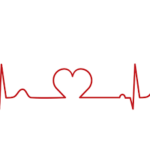The following is a brief introduction to the topic:
In recent years, the opioid crisis has reached unprecedented levels of public health. The addictive nature of opioids has led to devastating effects for millions of people around the world. The pain of opioid withdrawal can be excruciating, which is why it’s a crucial phase on the road to recovery. This article examines the different strategies and options for pain relief available during opioid withdrawal. It also explores the challenges and hopes for a better future in the battle against opioid addiction.
Understanding Opioid Reduction
When individuals have a physical dependence on opioids, they suddenly stop taking them or reduce their intake. This can be a painful and uncomfortable process. Opioids such as oxycodone, hydrocodone, and heroin bind to receptors within the central nervous system and brain, altering pain perception and creating euphoria. Over time, tolerance develops as the body becomes accustomed to opioids. This leads to higher doses in order to achieve the desired effect. When the opioid supply is interrupted, withdrawal symptoms appear.
Symptoms of withdrawal from opioids include:
Nausea and vomiting
Diarrhea
Sweating
Muscle pain and aches
Anxiety disorders and depression
Insomnia
Restlessness
Runny nose with watering eyes
Dilated pupils
While not life-threatening symptoms, they can be extremely uncomfortable. This leads many people to use opioids in order to avoid pain. Fear of withdrawal can be a major barrier to treatment and ending the cycle of addiction.
What is the role of medication-assisted treatment (MAT)?
The Medication-Assisted Treatment (MAT) approach is well-established for managing withdrawal symptoms from opioids and supporting people on their road to recovery. MAT is a treatment that combines counseling, behavioral therapy and medications to treat opioid addiction. Three medications are used most commonly in MAT.
Methadone: Methadone, an opioid agonist with a long acting action, helps reduce withdrawal symptoms and cravings. It is administered under controlled conditions in a clinical setting, to prevent misuse.
Buprenorphine : Buprenorphine, a partial opioid-agonist, reduces withdrawal symptoms and cravings. It is less likely to be abused and can be prescribed in a clinic setting by healthcare professionals.
Naltrexone – Naltrexone blocks the effects that opioids have. After the withdrawal phase, it is used to prevent relapse.
These medications are effective at reducing pain and discomfort associated with opioid withdrawal, while reducing the likelihood of an overdose or relapse.
Over-the-Counter Medications
Some over-the counter (OTC), medications, and supplements can also help relieve specific withdrawal symptoms. These OTC options can be beneficial, but it’s important to speak with a doctor before taking them, as some of them may interact negatively with other medications. OTC pain relievers can be used during opioid withdrawal.
Loperamide is an anti-diarrheal drug that can reduce the symptoms of opioid withdrawal. It slows down digestion, which reduces diarrhea and cramps.
Ibuprofen and acetaminophen are OTC pain relievers that can help with muscle pains associated with withdrawal. They may not be able to provide full relief, and they should only be used with caution, as they could have negative effects on your liver or digestive system.
Magnesium is a good supplement for people who are experiencing muscle spasms and cramps due to opioid withdrawal. Magnesium can help reduce symptoms and relax muscles.
L-theanine L-theanine, an amino acid that is found in teas and coffees has a calming and relaxing effect. It may also help to reduce anxiety during withdrawal.
Nutrition and Hydration: Staying hydrated, and eating nutritious foods to support your body during withdrawal symptoms can help. Dehydration and poor nutritional habits can worsen symptoms.
Pain Relief during Opioid Withdrawal: Challenges
Pain relief during opioid withdrawal is a difficult task, despite the medications and strategies available. These challenges are caused by a number of factors:
Variability in symptoms: The intensity and duration of opioid withdrawal symptoms can vary greatly from one person to another. It is difficult to predict the effectiveness of a particular treatment or medication for a given individual.
Psychological distress. Opioid addiction is more than just physical withdrawal. It also causes intense psychological distress. Anxiety and depression can be as crippling as physical symptoms. Pain relief strategies need to address both.
Relapse risk: Individuals who are suffering from withdrawal may seek opioids in order to relieve their pain, which increases the likelihood of an overdose or relapse.
Access to treatment is limited: Not everyone who struggles with opioid addiction has access to comprehensive addiction treatment programs or MAT. Geographic location, cost and other factors can limit the availability of MAT.
Hope for the Future
The opioid crisis has prompted significant efforts to better address addiction and withdrawal symptoms. Hope is on the horizon in terms of improved pain relief for opioid withdrawal.
Research and Development: Researchers are working to develop more effective drugs and therapies for opioid withdrawal. The testing of new drugs is being done to target specific withdrawal and craving symptoms.
Holistic approaches: Many treatment programs for addiction are adopting a holistic approach, which takes into account the physical, psychological, and social factors of addiction and withdrawal. Holistic treatments can include mindfulness, acupuncture and yoga to relieve withdrawal symptoms.
Access to treatment is being improved: MAT and addiction programs are now more readily available, especially in areas that have been underserved. Access to these resources will help more people receive the treatment they need.
Destigmatization and public awareness: It is important to reduce the stigma associated with addiction in order to encourage individuals seeking help. The more that society views addiction as a medical problem rather than a moral failure, the more people may be willing and able to seek treatment.
The conclusion of the article is:
It is difficult and complex to manage pain during opioid withdrawal, but this is an important step on the road to recovery. The use of medication-assisted treatments, over-the-counter options and holistic approaches can all help manage withdrawal symptoms and cravings. The variability of symptoms, and the potential for relapse, remain major challenges.
The opioid crisis has had devastating effects on families, individuals and communities. There is still hope for a better future. Research advances, holistic treatment approaches, improved access and stigma reduction all contribute to a comprehensive and effective response against opioid addiction and withdrawal. The road to recovery may not be easy, but it is possible. Support is available for anyone who wants it.
Credits: FIFTH Planet & USMEDSPharma



